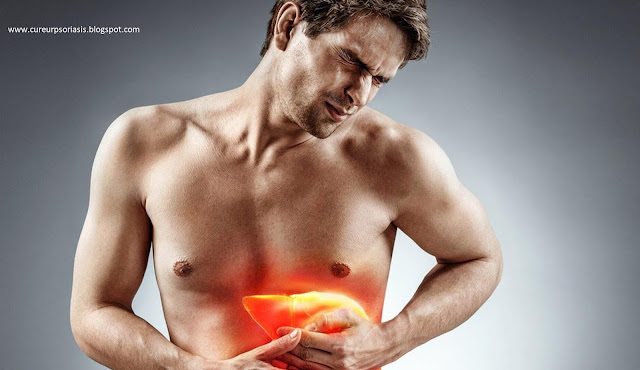What Is Inverse Psoriasis?
What Is Inverse Psoriasis?
A Unique Type of Psoriasis Explained
Introduction
Inverse psoriasis is a distinct form of psoriasis that primarily affects areas where the skin folds, such as the armpits, groin, under the breasts, and in the folds of the buttocks. Unlike other types of psoriasis that present with raised, scaly plaques, inverse psoriasis appears as smooth, shiny, red patches. This condition can cause discomfort and irritation, making it crucial to understand its causes, symptoms, triggers, and available treatments. In this article, we will delve into the unique aspects of inverse psoriasis, providing clear explanations in simple language for individuals seeking a comprehensive understanding of this particular type of psoriasis.
What is Inverse Psoriasis?
Inverse psoriasis, also known as flexural psoriasis, is a type of psoriasis that primarily affects the skin folds. It is characterized by smooth, shiny, red patches that lack the typical scaling observed in other forms of psoriasis. These patches may be more prone to moisture retention, which can lead to additional complications such as fungal or yeast infections. Inverse psoriasis can occur alone or in combination with other types of psoriasis.
Symptoms of Inverse Psoriasis
Inverse psoriasis commonly affects areas where the skin rubs against itself, causing friction and perspiration. The most common sites of involvement include the armpits, groin, under the breasts, and the folds of the buttocks. The symptoms of inverse psoriasis may vary from person to person but often include:
1. Smooth, shiny patches: Inverse psoriasis presents as smooth, red patches that lack the scaling and silvery appearance seen in other types of psoriasis. The affected skin may appear shiny or moist.
2. Irritation and discomfort: The red patches may be itchy, sore, or tender, causing significant discomfort, especially in areas where friction and perspiration occur.
3. Sensitivity to moisture: Inverse psoriasis patches may become irritated and worsen due to the accumulation of sweat and moisture in the affected skin folds.
4. Increased risk of infections: The warm and moist environment in skin folds provides an ideal breeding ground for fungal or yeast infections, which can further complicate the condition.
Triggers and Factors Influencing Inverse Psoriasis (300 words)
While the exact cause of inverse psoriasis remains unknown, several factors can contribute to its development and exacerbation. These include:
1. Genetic predisposition: A family history of psoriasis increases the likelihood of developing inverse psoriasis. Certain genetic variations are associated with a higher risk of developing the condition.
2. Friction and sweating: The continuous rubbing of skin folds and increased perspiration in these areas can trigger or worsen inverse psoriasis. This is particularly true in individuals who are overweight or have excessive skin folds.
3. Moisture retention: Inverse psoriasis patches may worsen due to the retention of moisture in the affected skin folds. This creates an environment that is conducive to the growth of fungi or yeasts, leading to additional complications.
4. Hormonal changes: Hormonal fluctuations, such as those occurring during pregnancy or menopause, can influence the development or worsening of inverse psoriasis in some individuals.
5. Certain medications: Some medications, including systemic corticosteroids and medications that suppress the immune system, may trigger or exacerbate inverse psoriasis.
Diagnosing Inverse Psoriasis
Diagnosing inverse psoriasis typically involves a physical examination by a healthcare professional. The characteristic appearance of smooth, shiny, red patches in skin folds helps differentiate it from other skin conditions. In some cases, a skin biopsy may be performed to confirm the diagnosis and rule out other possible causes.
Treatment Options for Inverse Psoriasis
While there is no cure for inverse psoriasis, various treatment options can help manage symptoms, reduce inflammation, and improve the quality of life for individuals affected by this condition. Treatment approaches may include:
1. Topical treatments: Topical corticosteroids, calcineurin inhibitors, and topical retinoids can be prescribed to reduce inflammation, relieve itching, and improve the appearance of inverse psoriasis patches. Moisturizers are also beneficial for keeping the affected areas moisturized and preventing excessive dryness.
2. Antifungal or anti-yeast medications: In cases where secondary fungal or yeast infections are present, antifungal or anti-yeast medications may be prescribed to address the underlying infection and alleviate symptoms.
3. Phototherapy: Controlled exposure to ultraviolet (UV) light, either through natural sunlight or artificial light sources, can help reduce inflammation and improve inverse psoriasis. Phototherapy should be administered under medical supervision to ensure its effectiveness and safety.
4. Systemic medications: In more severe cases or when topical treatments and phototherapy do not provide adequate relief, systemic medications such as oral retinoids, methotrexate, cyclosporine, or biologic agents may be considered. These medications work by suppressing the immune system and reducing inflammation throughout the body.
5. Lifestyle modifications: Implementing certain lifestyle changes can complement medical treatments and help manage inverse psoriasis. These include maintaining a healthy weight, wearing loose-fitting clothing to minimize friction, keeping the affected areas clean and dry, and avoiding triggers such as excessive sweating or irritants.
Conclusion
Inverse psoriasis is a unique form of psoriasis that primarily affects skin folds, presenting as smooth, shiny, red patches. While it can be uncomfortable and impact daily life, understanding its causes, symptoms, triggers, and available treatment options can empower individuals to effectively manage the condition. Seeking medical advice, adhering to prescribed treatments, and implementing lifestyle modifications can help alleviate symptoms, reduce flare-ups, and improve the overall quality of life for individuals living with inverse psoriasis. With ongoing research and advancements in treatment, there is hope for enhanced therapeutic options and improved outcomes in the future. By fostering awareness and providing support, we can create a more inclusive and informed environment for individuals affected by this particular type of psoriasis.









Comments
Post a Comment